My apologies, I’ve wrecked my writing schedule a bit. I’m up in the mountains of North Georgia with my parents. And it’s BUSY. I’ve pledged to do some type of art every day to strengthen my self esteem muscles, and while on the road I’ve decided to meet the objective by reading a chapter a day in Julia Cameron’s Seeking Wisdom: A Spiritual Path to Creative Connection.
Egads. I bought my copy last week at Barnes and Nobles for $20 and when I got the above link from Amazon - they have it on sale for $8.34. DAMMIT! There’s my conundrum - I love to shop in a real bookstore, fondle the books, look at covers, have a cup of coffee in a comfy chair - but I’m not sure it’s worth a $12 price difference.
(You’re in luck. I’m typing on a small keyboard while on the road, so I’m greatly shortening the lead in to our artist. And I have to read my chapter today, so we’re done! Now on to the good stuff.)
ANYWAY, here’s the second part of our Finnish artist from Tuesday, Akseli Gallen-Kallela. I’m not sure if this first painting is part of his Kalevala cycle, but I had to include this one.
Is it just me, or do you see it too? He painted Greta Thunberg over a century before she was born!
I put most of his biography in the first article, and saved the folklore section for today.
Gallen-Kallela’s lifelong passion was the Kalevala — a collection of poems of Finnish folklore passed down through generations.
In the summer of 1890, the artist, his fiancée Mary Gallén (née Slöör), and his Swedish colleague, Louis Sparre, journeyed to the songlands of the Kalevala: Kuhmo and Russian Karelia.
This formative trip, which was both a honeymoon and an artistic mission, inspired and strengthened a Karelia-oriented cultural movement in Finland.
n the 1890s, Gallen-Kallela turned to Symbolism. During this decade, Gallen-Kallela painted many of his famous Kalevala works, such as The Defense of the Sampo (1896) Lemminkäinen’s Mother (1897), and Kullervo Cursing (1899).
The Kalevala begins with the traditional Finnish creation myth, leading into stories of the creation of the earth, plants, creatures, and the sky. Creation, healing, combat and internal story telling are often accomplished by the character(s) involved singing of their exploits or desires. Many parts of the stories involve a character hunting or requesting lyrics (spells) to acquire some skill, such as boatbuilding or the mastery of iron making. As well as magical spell casting and singing, there are many stories of lust, romance, kidnapping and seduction. The protagonists of the stories often have to accomplish feats that are unreasonable or impossible which they often fail to achieve, leading to tragedy and humiliation.
I found a Youtube video from Ateneum Art Museum about Lemminkäinen’s Mother. The model for the mother was the artist’s mother and Gallen-Kallela painted Lemminkaeinen as a self portrait. He completed the huge painting in a year in a specially built studio with black walls and a skylight. The video gives the story in English, although the soft focus on different parts of the painting is a little distracting. Nevertheless - if you’re interested in the stories behind the paintings, this is a good place to start. (Or, if you want the Clif Notes version, the son dies trying to kill a swan from hell to win a lady’s love. His mother finds his body parts, puts him back together but he is still dead. She sends a bee to the heavens and the bee brings back a second life from the Gods for the warrior.)
In Finland, the Symbolist movement was intertwined with Karelianism and the National Romantic style.
Besides the Kalevala, Gallen-Kallela also created illustrations for Aleksis Kivi’s novel, The Seven Brothers (1870) — widely considered the first significant novel written in Finnish.
The highlight of Gallen-Kallela's international career was the Finnish pavilion at the Paris 1900 World Fair, filled with frescoes based upon the Kalevala. Together with Louis Sparre, Gallen-Kallela created the interior design for the pavilion’s Iris Room.
The pavilion was great success and brought Finland, then in the middle of Russification, to the center of international attention.
Beyond the Paris World Fair, Gallen-Kallela left his mark upon Finnish architecture and design with the two studios that he conceived and built: Tarvaspää in Espoo and Kalela in the wilderness of Ruovesi. Constructed in 1895, this rural studio is one of the most famous examples of National Romantic architecture in Finland.
Kalela is one of the largest nineteenth-century log buildings in Finland whose structure remains intact. It is designed by Gallen-Kallela himself and was completed in 1895. Gallen-Kallela family lived in Kalela several times between 1895 and 1921. Akseli Gallen-Kallela painted there his most famous Kalevala-themed paintings and designed textiles, furnitures and frescoes to l'Exposition Universelle, The Paris World Expo in 1900.
If you want to learn more about the epic Finnish poem Kalevala, here’s another short five minute video that gives you the background, the stories and a lot more of Gallen-Kallela’s art. Another little bit of trivia - J.R.R. Tolkien claimed the Kalevala as one of his sources for The Silmarillion.





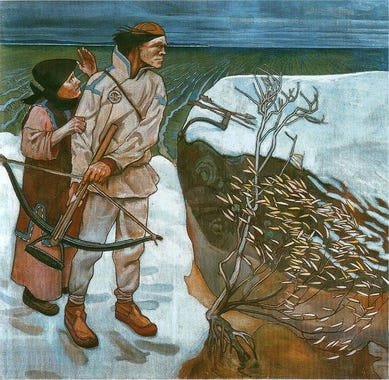


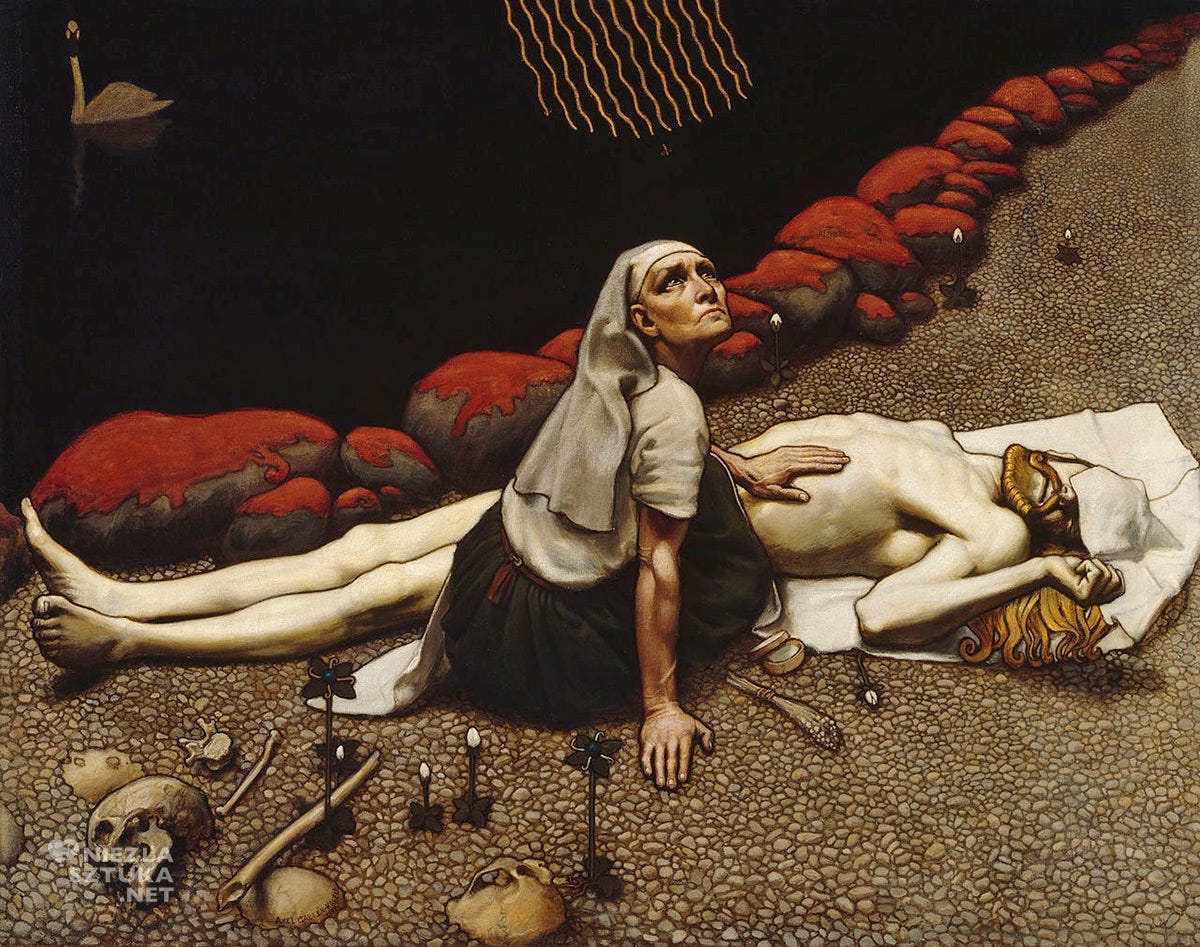

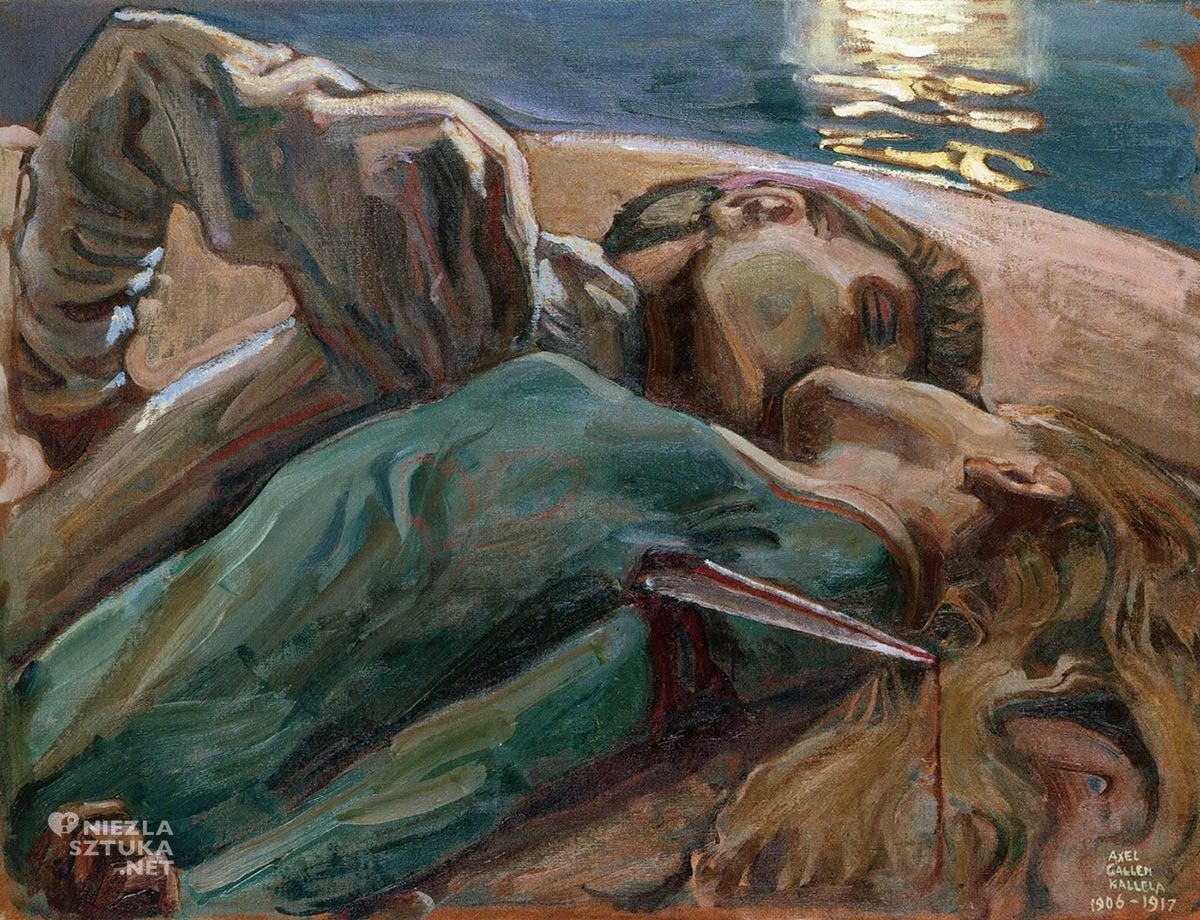
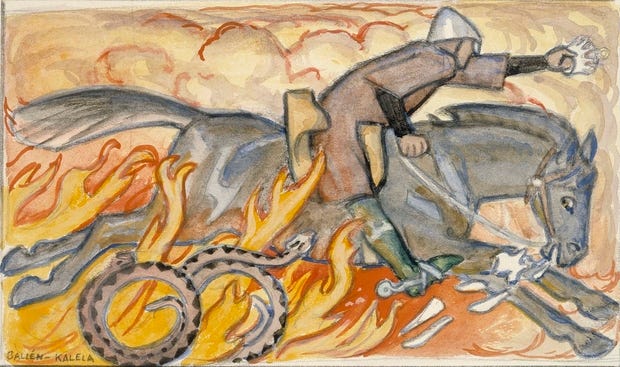
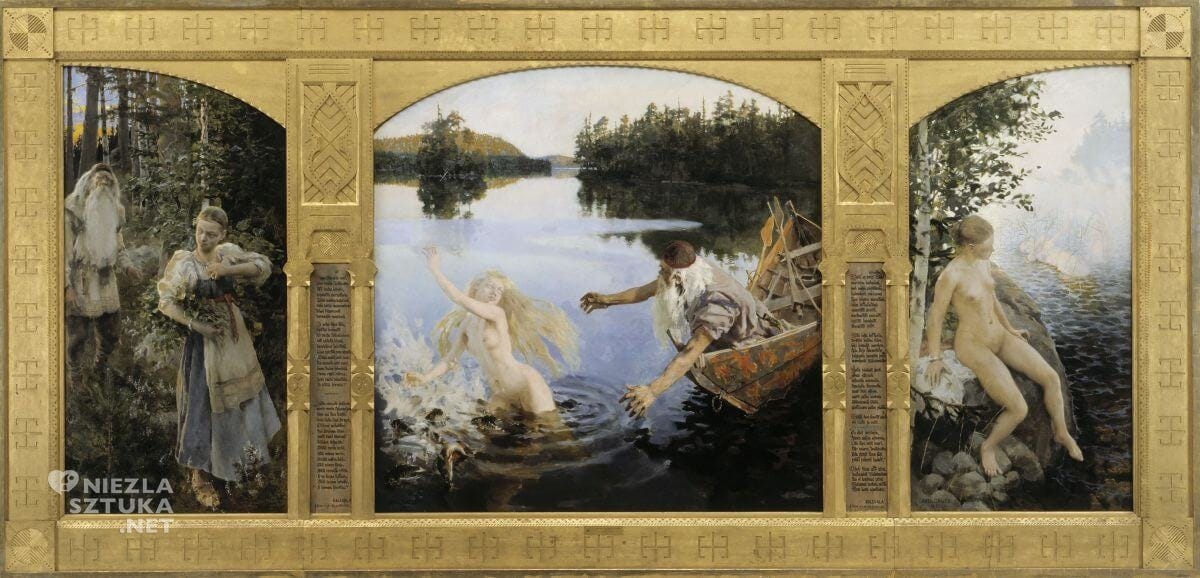
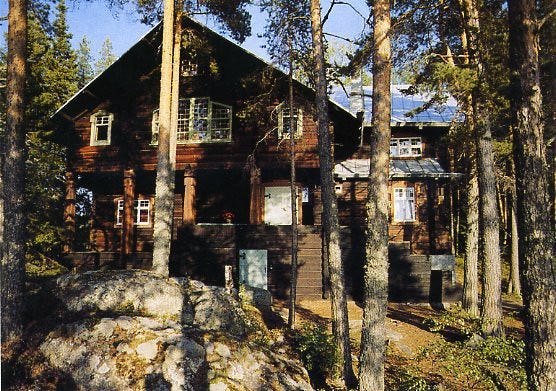
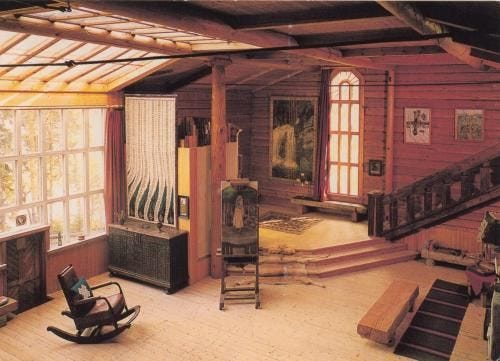
I love this and the research that has gone into it. Many poets and artists at the time were influenced by the appearance of the works in Paris. The influence went a long way into the Romantics. Beautiful and daring at the time. X
Oh my gosh, what an absolute treasure! I'm thrilled that you've written about Gallen-Kallela and I can't thank you enough. And the pictures! I'm in heaven.
I first found him in the 1980s when I was researching for a book I'd received a grant for but never finished. (My shame.) I'm half Finnish and the book was about Finnish miners in Michigan's Keweenaw Peninsula in 1913. I wanted the Kalevala to have a prominent place in the book, using it as a mystical side note throughout.
I read the Kalevala twice, and fell in love with Gallen-Kallela's paintings. 'Lemminkäinen’s Mother' was the most stunning, and now I know why. I now know the background and it makes it even more special.
I had read that Tolkein had been influenced by the Kalevala, but I've also read that Longfellow had read it, as well, and loved the cadence so much he chose it for The Song of Hiawatha. It gave it the sound of Indian drums, but the beat actually came from Finnish runesingers who, before Finland had a written language, roamed across the country reciting the Kalevala while pounding on the strings of the Kantele, a crude instrument similar to a dulcimer.
Anyway, thank you so much for this. It's going into my 'save' file and I'll be going back to it often. ❤️